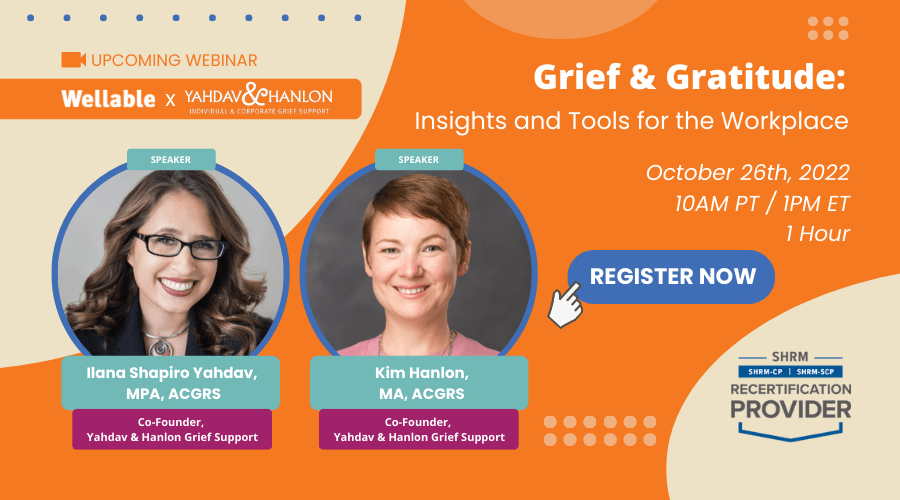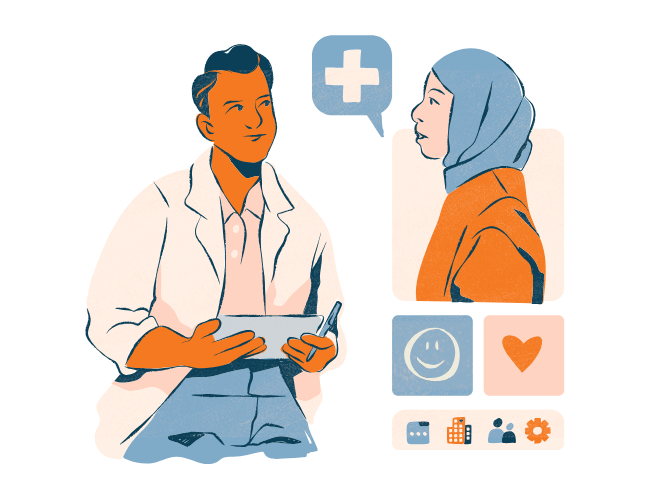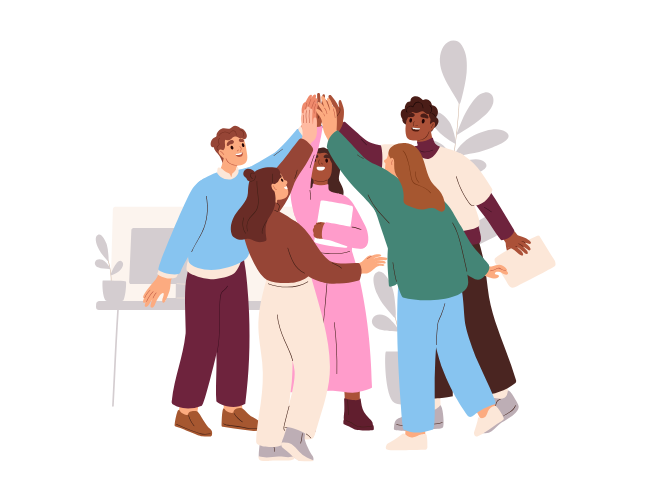By: Yahdav & Hanlon Grief Support
Employees spend a lot of their time and energy in their workplace–roughly one-third of their life, on average, according to Gettysburg College. No wonder one’s personal life will spill into work and vice-versa. Some of this is unavoidable, especially without adequate coping mechanisms. When it comes to grief, there are more impacts on the workplace than many realize. Numerous organizations recognize the need to address workplace burnout, and much of burnout can be attributed to grief.
This will become more clear looking at the grief definitions used by Yahdav & Hanlon (from The Grief Recovery Handbook):
- Grief is the normal and natural reaction to loss of any kind.
- Grief is the conflicting feelings when something familiar ends or changes.
- Grief is cumulative and cumulatively negative.
These definitions expand grief to encompass more than death or divorce–two loss types commonly associated with grief. We can grieve overall positive life events in addition to those difficult changes or losses.
For example, when Yahdav & Hanlon cofounder, Kim Hanlon, was married, she grieved her desired name change as she was the last in the line of the Englishes. Her brother had died the year before, and it was heartbreaking not to share a name with him. Another example is when cofounder, Ilana Yahdav, gave birth to her daughter. She was so full of joy but also grieved that her late father, who died 15 years earlier, would never get to meet her baby.
This approach to grief applies to workplace changes as well. It is straightforward to see how layoffs or the death of an employee are losses, but promotions can also be grieving events. To illustrate this concept, let’s take Sally, a fictitious person who is recently promoted. She is proud of the achievement and pay raise but also worries about whether she can handle the new workload and responsibilities. She is self-conscious that she was selected for promotion over a colleague and how that may affect the workplace environment and morale.
Additionally, she has conflicting feelings about moving into a pay grade higher than anyone in her family has. There is a sense of personal pride about her success, but also some shame if relatives feel “left behind.” This promotion example can be further complicated if it is part of a larger company reorganization. “Reorgs” can be grieving events–shifting roles, new colleagues, new management, possible layoffs, and new offices can all result in mixed feelings. Let’s say Sally was not only retained but also promoted when other colleagues were laid off. Feelings of guilt, shame, loss of trust in the company, or anxiety about her new role in the company can all be potential responses for Sally. These feelings can contribute to burnout if they go unaddressed.
As noted in the third grief definition, grief can accumulate and cause more strain over time. Any previous losses experienced, both professionally and personally, can come to the forefront when there is a new loss. This is magnified by all the misinformation about grief, stemming from the belief that people just need to give it time, not feel bad, and look for the silver lining. These fallacies can further perpetuate one’s grief. Unfortunately, without the appropriate knowledge and tools to process difficult feelings, many stifle them, which can lead to burnout or an overreaction.
Grief can also affect concentration and memory. Many employees experience anxiety or depression following a loss, which can lead to feeling less motivated or engaged at work. Productivity can decrease while on-the-job errors frequently increase. Considering these impacts, it is no wonder that a study showed that over 100 billion USD are lost each year (pre-covid) due to grief. This figure underrepresents the true financial impacts when one accounts for inflation, the pandemic, as well as depression and substance abuse on the job, as grief influences both.
The first step to better addressing grief in the workplace is understanding what it is and building awareness around the nuances of it. People get stuck in grief when they feel incomplete and unheard – wishing that things were different or better or having unmet hopes or expectations for how life or their career would progress. Understanding this will help employers appreciate the need for a broader approach to grief support and find ways to support struggling employees without jumping to disciplinary actions.
Comprehensive grief support can include:
- Recognizing that personal issues can and will overflow into the workplace and support resources are imperative.
- Offering education to provide a common understanding of grief and enable managers and colleagues alike to support each other.
- Training leadership to acknowledge organizational grief for both individuals and teams.
- Providing group or individual grief support via trained professionals.
- Updating company policies to include extended bereavement leave, work accommodations, and increased flexibility for grievers.
Burnout is a major issue and grief directly contributes to this. Updating company policies and enhancing workplace grief support will not just support grievers but enhance employee wellness and reduce burnout. Register for this week’s upcoming Wellable Labs webinar on “Grief & Gratitude: Insights and Tools for the Workplace” featuring Yahdav & Hanlon.













